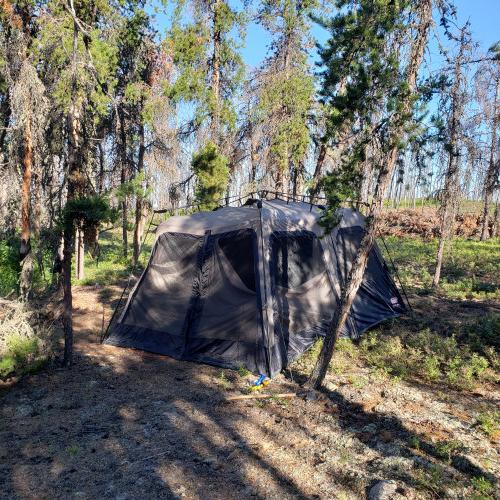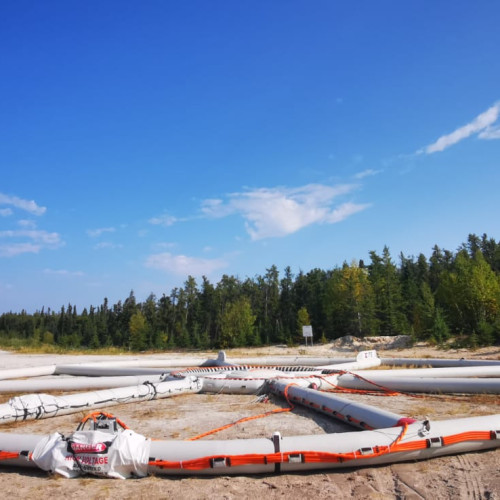Diabase
Diabase
The Diabase Project (“The Project”) is at the exploration stage, with exploration focused on testing the Cable Bay fault corridor, interpreted to represent a suture zone between the Archean Mudjatik and Talston domains within the Trans-Hudson orogeny. Historical work started in the late 1970s, with the first major programs completed by the Saskatchewan Mineral Development Corporation in 1979 and the last major program completed by Nuinsco Resources Inc. (“Nuinsco”) in 2011. There are 67 exploration diamond drill holes on the property. Anomalous uranium values have been intersected on the Project, primarily associated with an area intruded by a late diabase dyke, highlighted by drill holes ND0801 (707 ppm Upartial over 0.25 m) and ND0807 (426 ppm Upartial over 0.40 m).
The Diabase Project is located on the southern rim of the Athabasca Basin uranium province in Saskatchewan, Canada, approximately 75 km to the west of Cameco’s Key Lake uranium mill. The project is comprised of 20 mineral claims covering 71,531 acres.
The basement rocks on the project are primarily comprised of Mudjatik Domain felsic orthogneisses and felsic intrusive rocks, with subsidiary supracrustal rocks comprised of variably graphitic, psammopelitic to pelitic gniesses. The Mudjatik Domain is characterized by long narrow arcuate bands of supracrustal rock. This distinctive arcuate pattern results from regional dome-and-basin fold interference from polyphase folding. The Mudjatik Domain rocks are separated from the middle-amphibolite facies, volcanogenic rocks of Virgin River Schist Group to the west by the northeast-striking Cable Bay Shear Zone.
The Cable Bay Shear Zone represents the primary exploration target on the Project. The Cable Bay Shear Zone features cataclastic rocks across a 50 to 100 m width along the south shore of Cable Bay, which forms the southwest corner of Cree Lake. Within the shear zone felsic rocks have been metamorphosed to mylonites and mafic rocks to coarse cataclasites. The shear zone strikes to the northeast, commonly subparallel with the foliation orientation. The Cable Bay Shear Zone has been intersected in drilling in several locations along the Diabase Project trend.
In the Cree Lake area, the fluvial Manitou Falls Formations of the Athabasca group are dominant, comprised of intraclast-rich sandstones, sandstones, pebbly sandstones, and minor conglomerate. To the north of Cree Lake, the Manitou Falls Formation is overlain by the fluvial pebbly sandstones of the Lazenby Lake Formation, and by the more extensive, fluvial, and marine sandstones and siltstones of
the Wolverine Point Formation. The depth to the unconformity on the project ranges from zero in the extreme southwest of the project to over 500 m depth in the most northeastern hole on the trend.
Canada Careers
| Position | Location | Description |
|---|---|---|
| Junior Geologist Posting Saskatchewan | Saskatchewan |
To apply for any of the above positions, send your resume and qualifications to: [email protected].





